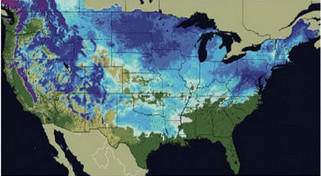
Faced with falling public confidence in climate science, the United Nations announced it would conduct a review of its climate arm, the Intergovernmental Panel on Climate Change (IPCC). The panel’s work has come under heavy fire in recent months and its leader, Rajendra Pachauri, now is lacking support from international climate ministers themselves.
Dozens of errors have been discovered in the IPCC’s seminal AR4 report in recent weeks. Claims of disappearing Himalayan glaciers, threatened Amazonian rain forests and more have all been discredited. The report which was supposed to be a shining example of peer reviewed science cited dozens of questionable sources from climate advocacy groups.
At a meeting held by the United Nations Environment Program (UNEP) in Bali, ministers recognized the many errors and are seeking to reassure the world their science is sound. Privately, ministers have expressed embarrassment at the errors and frustration at the handling of the issues by Pachauri.
Nick Nuttall, UNEP spokesman, told reporters that details of the review would be announced next week. The makeup of the group “will be senior scientific figures,” he said. “I can’t name who they are right now. It should do a review of the IPCC, produce a report by, say, August and there is a plenary of the IPCC in South Korea in October. The report will go there for adoption.”
In a private meeting with the governing council, Pachauri did little to reassure them of his ability to lead the panel going forward. He expressed ‘regret’ for the errors but did not apologize, adding to the frustration of the leaders. The IPCC’s leader further only admitted to the Himalayan glacier error calling the dozens of others ‘misunderstandings.’
 There is much more to this story. Privately, ministers are expressing doubt about Pachauri’s ability to lead. Get the details from the Climate Change Examiner.
There is much more to this story. Privately, ministers are expressing doubt about Pachauri’s ability to lead. Get the details from the Climate Change Examiner.






